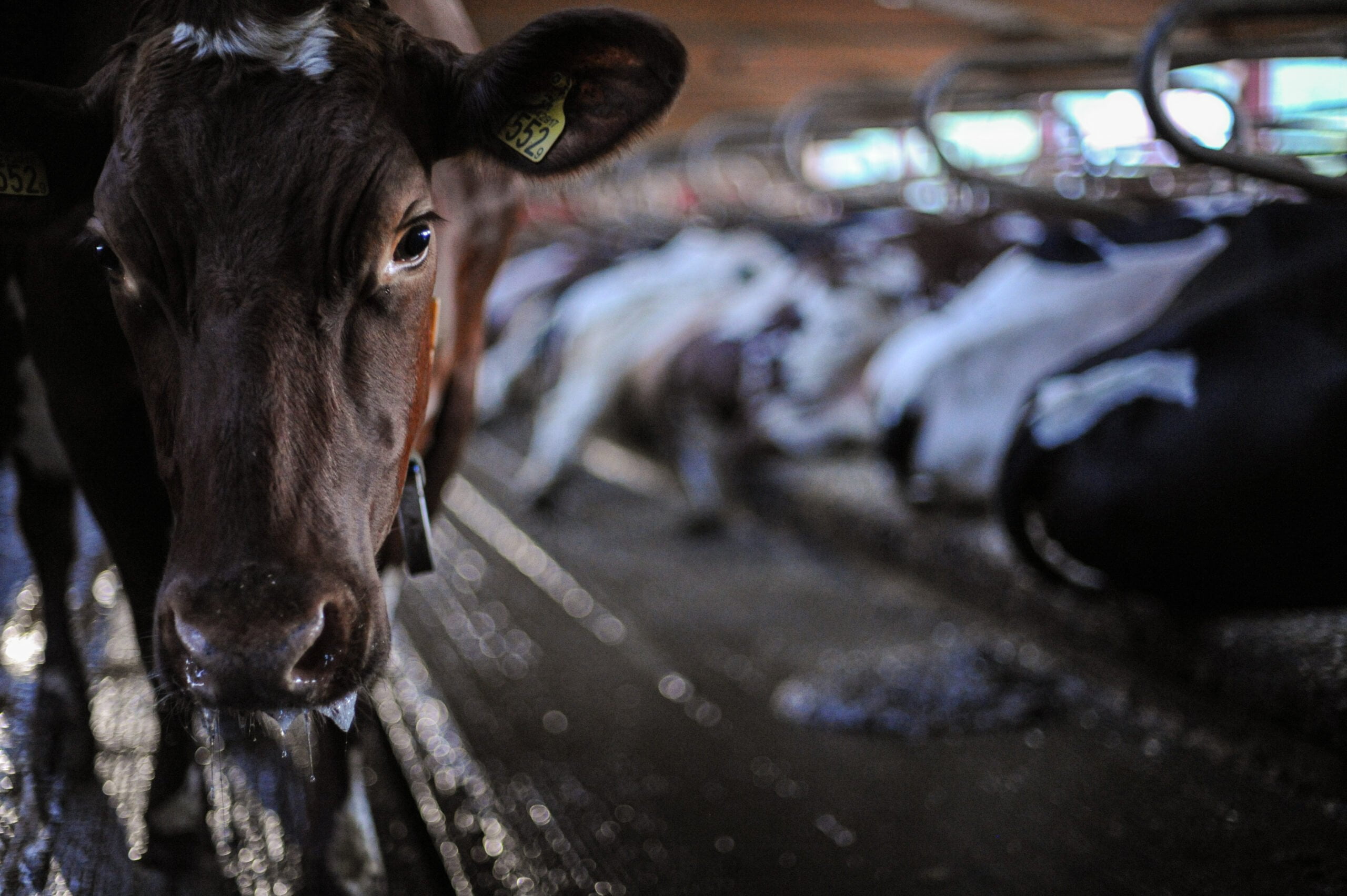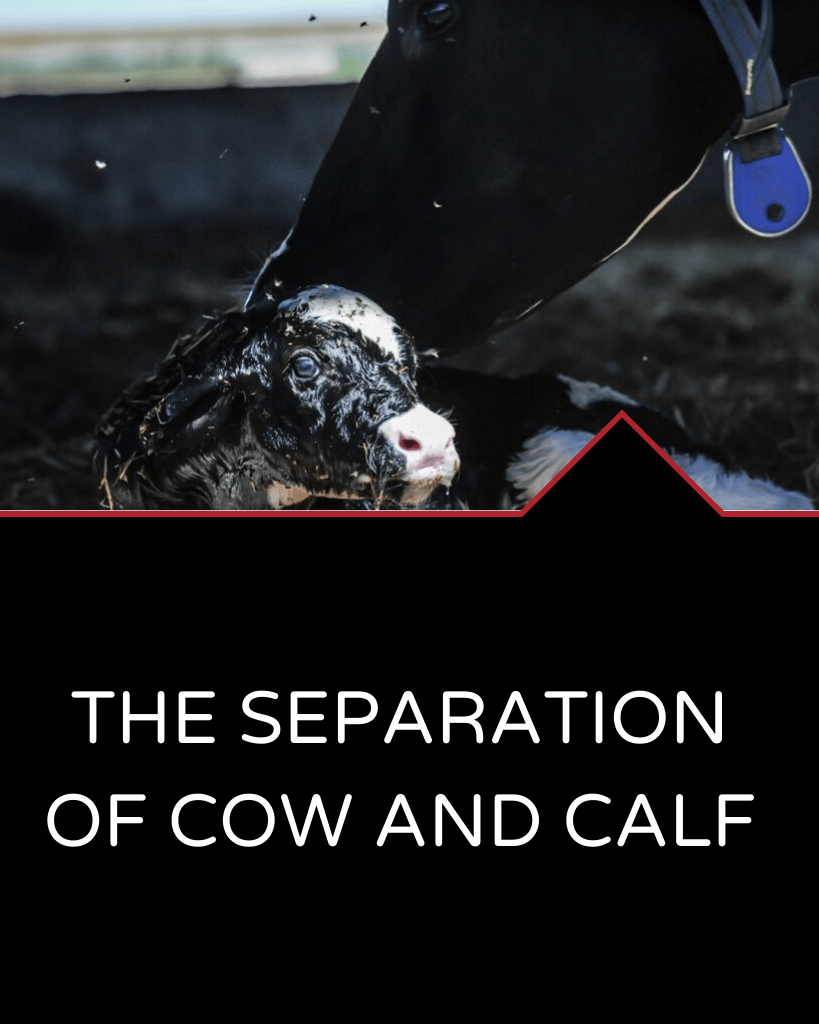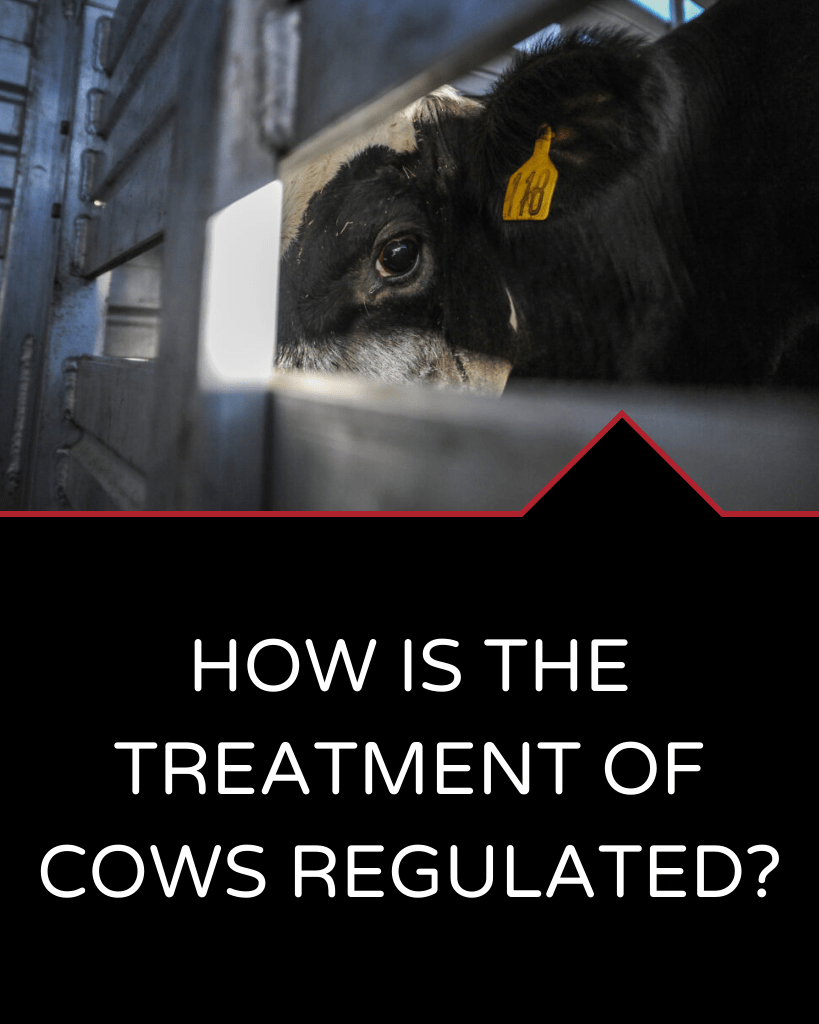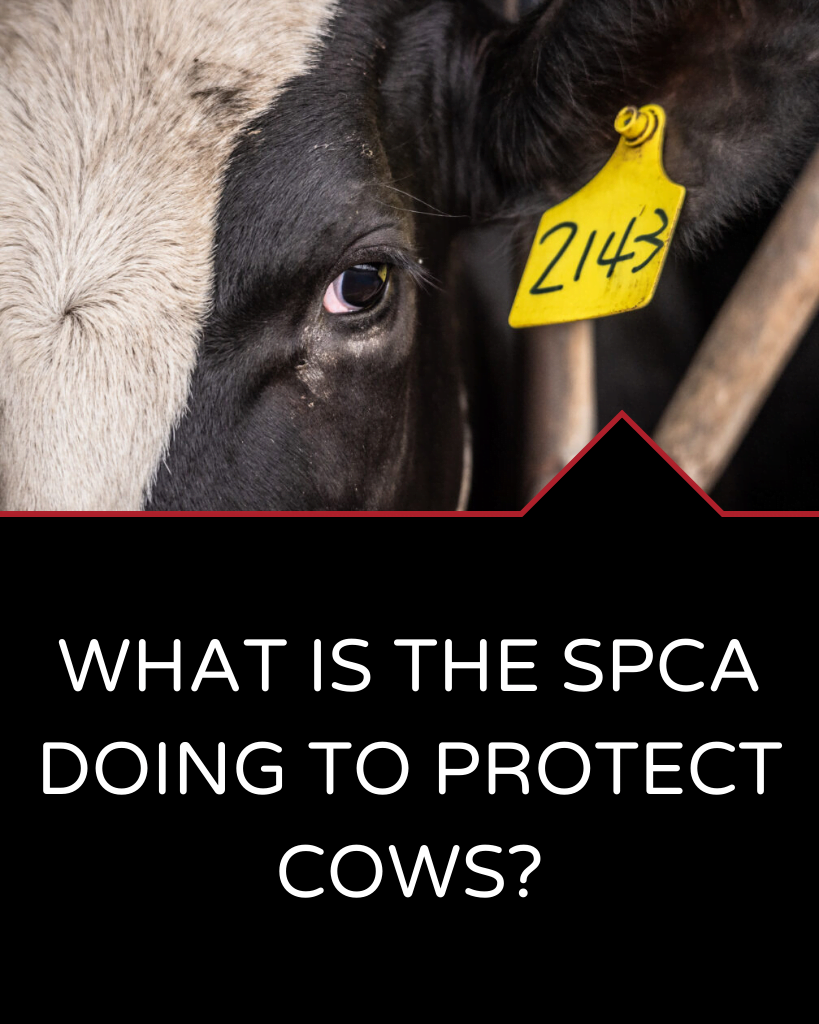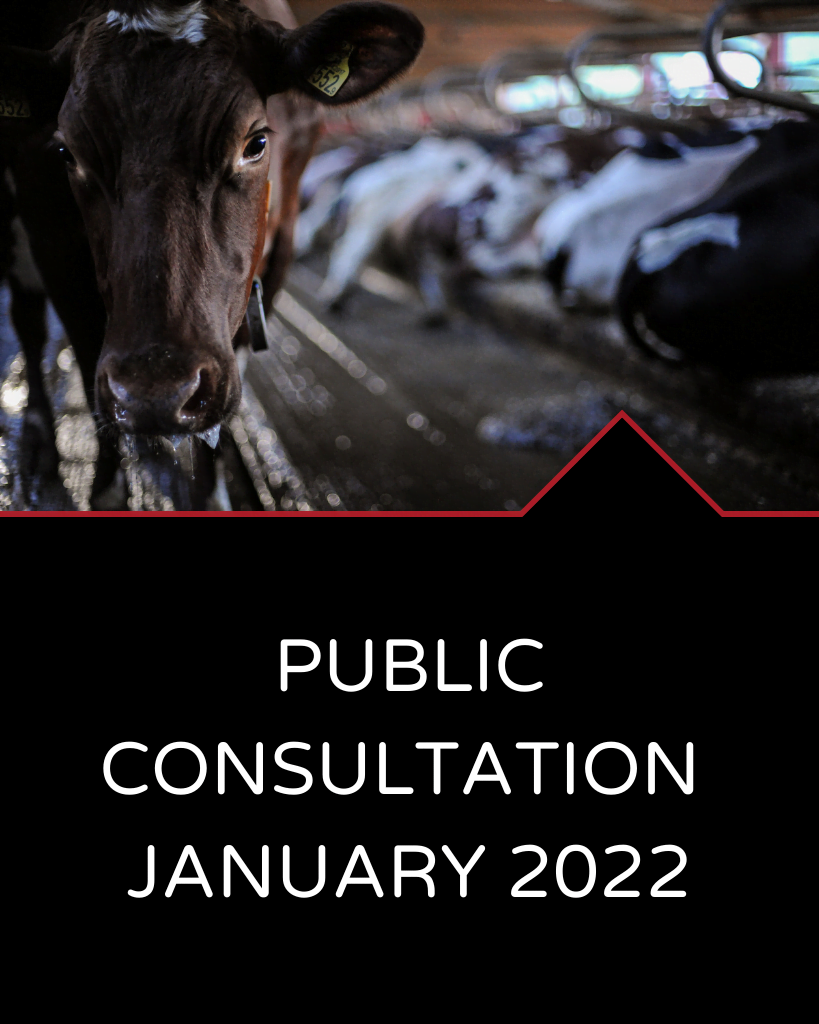The road to slaughter
After being used to produce milk all their lives, cows are usually sent to be sold at auction at about five years of age, and then to slaughter. Cull cows—those who no longer produce enough milk—make up the majority of ground beef sold to consumers. Typically, 25% of a farm’s dairy cows are sent to slaughter each year, which represents approximately 250,000 cull cows in Canada annually.7
A cow naturally produces milk to feed one calf every year at a rate of about 4 litres per day. In the dairy industry, a dairy cow is expected to produce enough milk to feed 125 people, or up to 30 litres per day.8
After about five years, cull cows, now exhausted by such a demanding production, are transported over long distances to be slaughtered.
For cows who have spent their lives in tie stalls and therefore have not developed their muscles (as is the case for the majority of Quebec cows), the jostling and standing for long periods they must endure during transportation over long distances can be very difficult.
Cows are not currently required to be dried off from their milk production to go to slaughter. They are routinely transported over long distances while still lactating, causing discomfort and increasing the risk of developing painful physical conditions, such as mastitis, an inflammation of the udders.

